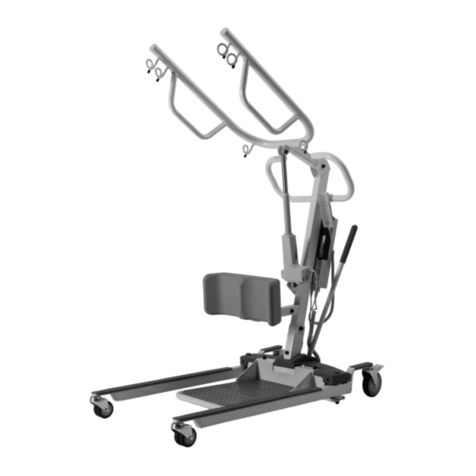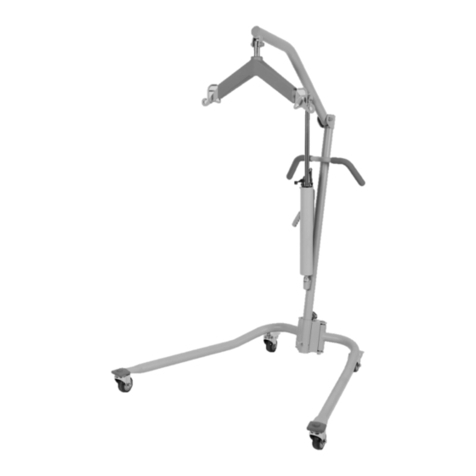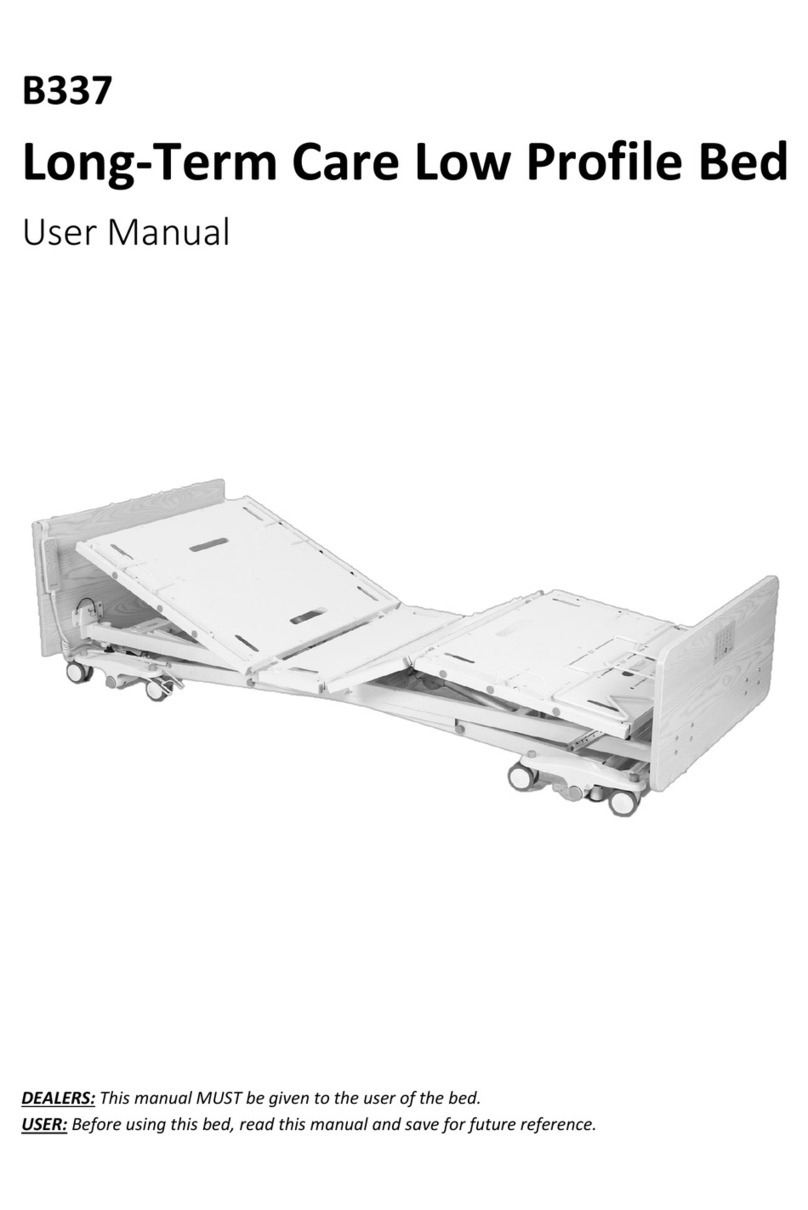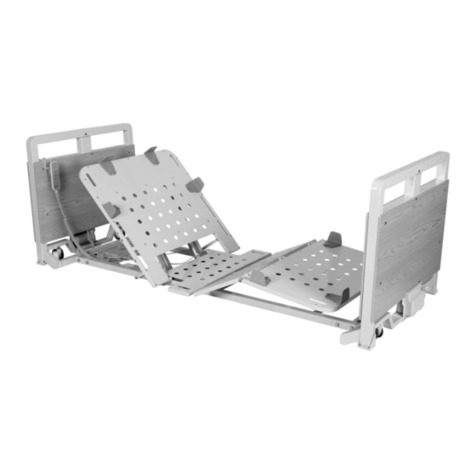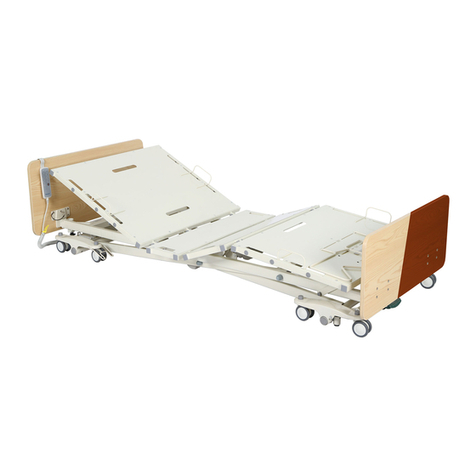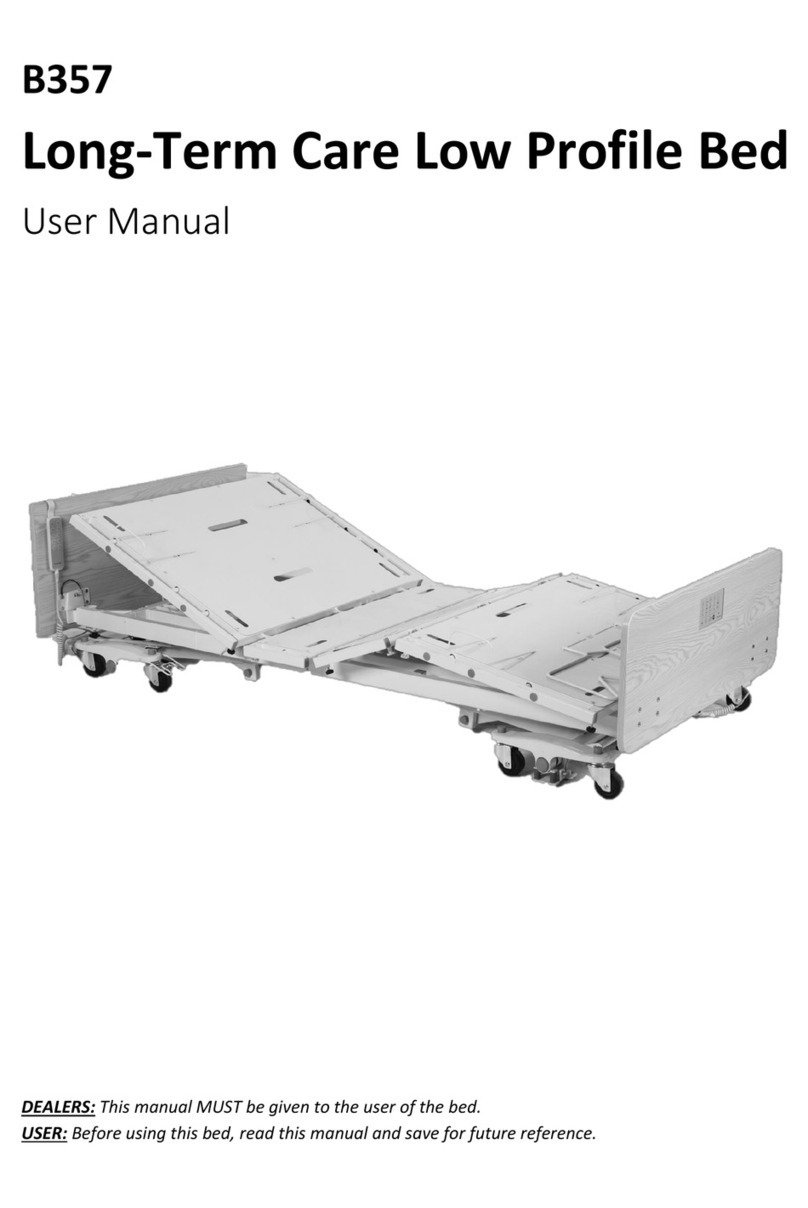Table of Contents
1.0 GENERAL INFORMATION....................................................................................................................2
1.1 STANDARD SYMBOLS AND WARNING LABELS......................................................................................................2
1.2 INTENDED USE..............................................................................................................................................2
1.3 SAFETY PRECAUTIONS ....................................................................................................................................3
1.4 LIFE EXPECTANCY ..........................................................................................................................................6
2.0 TECHNICAL SPECIFICATION.................................................................................................................7
2.1 PATIENT LIFT ................................................................................................................................................7
3.0 EQUIPMENT ASSEMBLY......................................................................................................................8
3.1 UNPACKING THE PATIENT LIFT .........................................................................................................................8
3.2 ASSEMBLING THE PATIENT LIFT.......................................................................................................................10
4.0 EQUIPMENT OPERATION .................................................................................................................14
4.1 OPERATING THE PATIENT LIFT.........................................................................................................................14
5.0 LIFTING THE PATIENT .......................................................................................................................16
5.1 PREPARING THE LIFT FOR USE.........................................................................................................................16
5.2 LIFTING/MOVING THE PATIENT......................................................................................................................17
5.3 TRANSFERRING THE PATIENT..........................................................................................................................18
6.0 MAINTENANCE & CLEANING ............................................................................................................21
6.1 MAINTENANCE SCHEDULE.............................................................................................................................21
6.2 DETECTING WEAR AND DAMAGE ...................................................................................................................22
6.3 LUBRICATION..............................................................................................................................................22
6.4 CHECKING AND TIGHTENING MAST PIVOT BOLT ................................................................................................23
6.5 REPLACING THE HYDRAULIC PUMP..................................................................................................................24
6.6 REPLACING THE SWIVEL BAR..........................................................................................................................25
6.7 MAINTAINING THE BASE ADJUSTMENT ............................................................................................................26
6.8 REPLACING THE CASTERS/FORKS ....................................................................................................................26
6.9 CLEANING..................................................................................................................................................28
7.0 TROUBLESHOOTING GUIDE..............................................................................................................29
8.0 LIMITED WARRANTY ........................................................................................................................30
APPENDIX –SERVICE RECORD........................................................................................................................31






